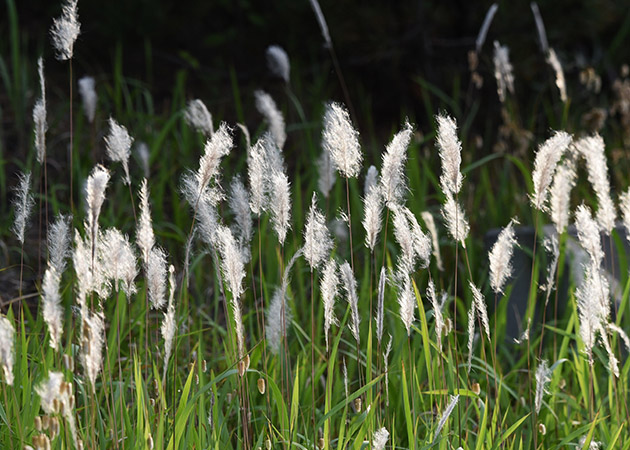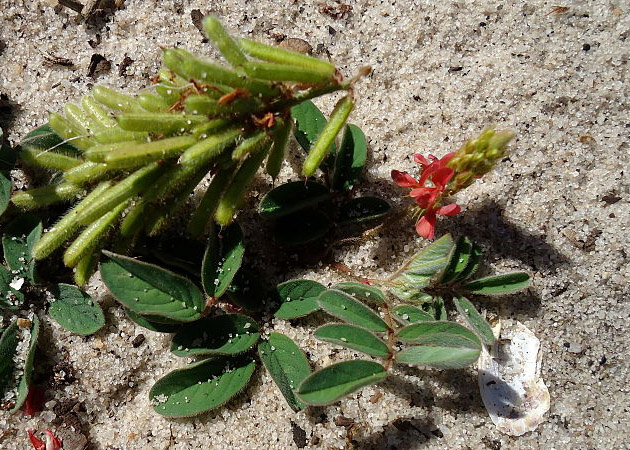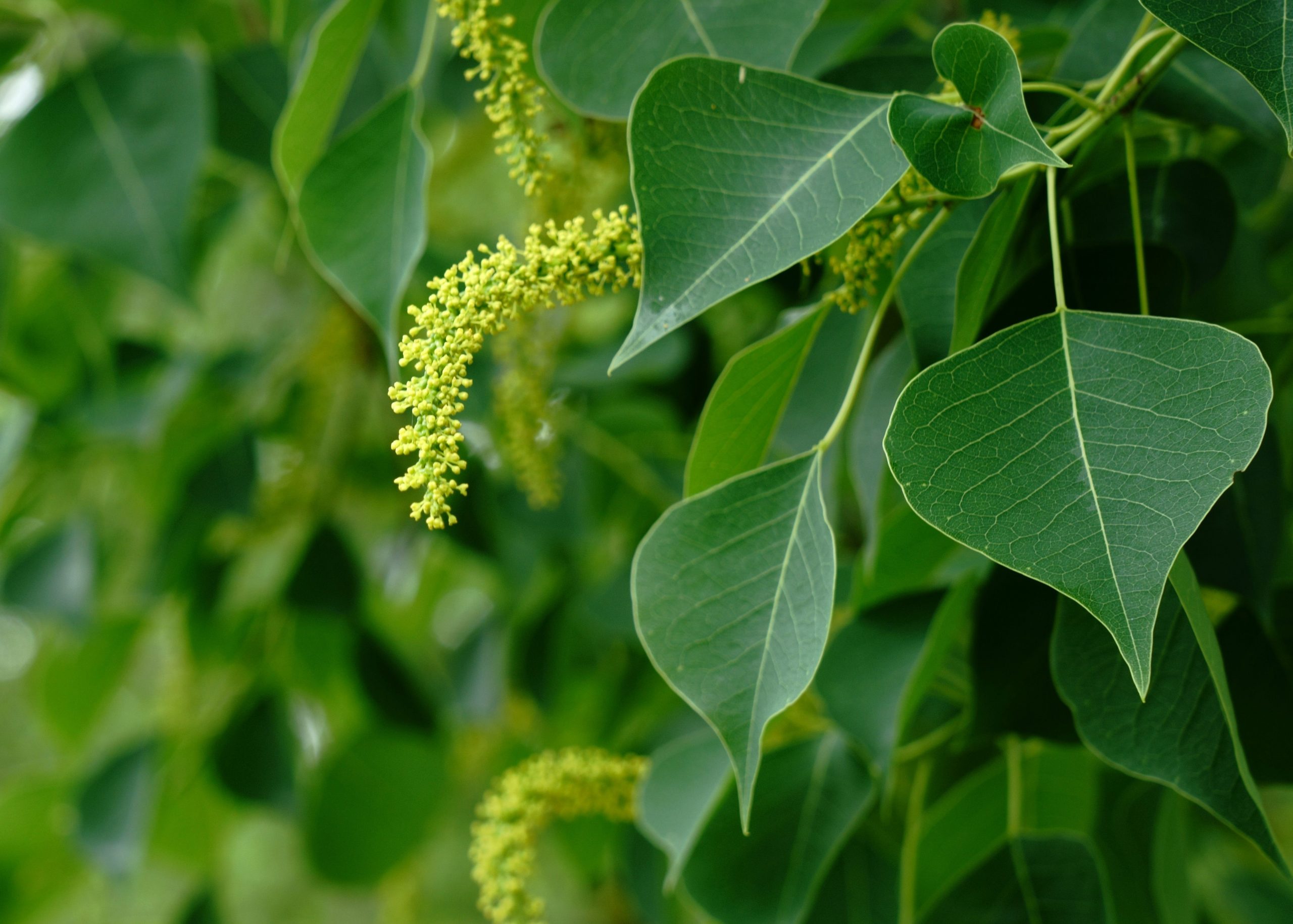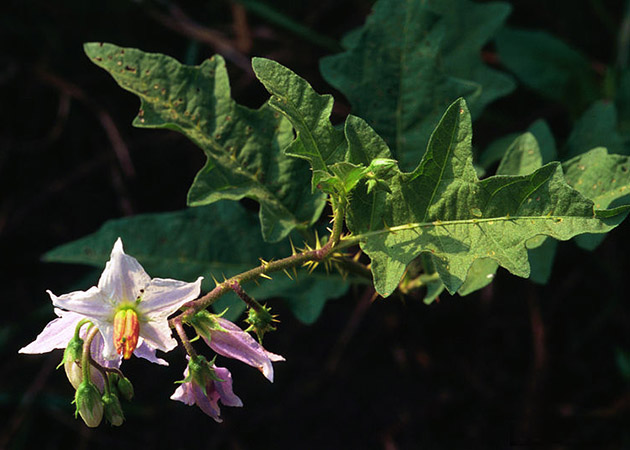
During the spring and summer, Florida definitely lives up to its name as “the land of flowers”– sometimes too well. Our state’s sunny, tropical environment makes it an inviting home for plant species that aren’t native to the area and could cause potential harm to local ecosystems as well as livestock. Here are five invasive and toxic plants to look out for on your property and in your paddocks to keep you (and your animals) safe!
1. Cogon Grass
 We’ve covered how nasty cogon grass can be in a previous blog. It isn’t toxic to animals, but it does wreak havoc on any property it comes in contact with. Native to Southeast Asia, the story of cogon grass in America begins around the Grand Bay area of Alabama in 1912 when it escaped from a Satsuma orange crate and began growing wild. It went on to be intentionally introduced in Mississippi and then Florida in the 30s and 40s as potential forage, and as a soil stabilizer. Unfortunately, animals didn’t take to it as forage and it choked out the native plants wherever it grew. This, combined with its prolific spread, led to it being declared a noxious weed and its planting outlawed. However, it still makes its way around roadsides and pastures due to to illegal plantings and hitching rides on equipment during road construction.
We’ve covered how nasty cogon grass can be in a previous blog. It isn’t toxic to animals, but it does wreak havoc on any property it comes in contact with. Native to Southeast Asia, the story of cogon grass in America begins around the Grand Bay area of Alabama in 1912 when it escaped from a Satsuma orange crate and began growing wild. It went on to be intentionally introduced in Mississippi and then Florida in the 30s and 40s as potential forage, and as a soil stabilizer. Unfortunately, animals didn’t take to it as forage and it choked out the native plants wherever it grew. This, combined with its prolific spread, led to it being declared a noxious weed and its planting outlawed. However, it still makes its way around roadsides and pastures due to to illegal plantings and hitching rides on equipment during road construction.
If you find your property infested with cogon grass, getting rid of it is a challenge, but not impossible. It has few natural pests and can be resilient in the face of herbicides, but a time-proven method of extermination is to destroy the rhizomes the grass grows out of. Tilling up the plant during the dry season dries out the rhizomes and keeps them from returning.
2. Creeping Indigo

Alex Popovkin, Bahia, Brazil
A toxic plant with a creepy name, creeping indigo can be hard to spot at first glance. This perennial herb native to the wetter areas of Africa likes to grow prostrate, or flat across the ground in large mats. It likes high-traffic areas like parking lots, roadsides, and pastures where grass might be a bit thin, and can be very hard to pull up thanks to its strong, woody taproot. Creeping indigo is dangerous to livestock, especially horses. Symptoms of creeping indigo toxicity include:
• Weight loss
• Labored breathing
• Foaming at the mouth
• Tongue and gum ulcers
• Neurological symptoms like lethargy, head drooping, loss of balance, and sudden episodes of sleepiness or loss of
consciousness
There’s no known effective remedy for creeping indigo toxicity, except for the immediate removal of animals from areas where the plant is growing. Some animals completely recover while others may have lingering neurological issues. While creeping indigo can be eliminated with herbicides, prevention is always best: make sure pastures are rich in pasture grasses, especially bahia. This will give creeping indigo and other noxious weeds little chance to take root.
3. Chinese Tallow
 You probably know this plant, one of the most recognizable plants in the South, as the “popcorn tree”. Hugely popular as an ornamental feature of lawns and gardens (as it turns flaming red in the fall), the Chinese Tallow has been in the US since the 1700s and has found a particularly comfy home in the Southeast. For example, it accounts for 20% of all trees in the Houston area alone and here in Florida has become naturalized in several counties. This explosive growth is why the Chinese Tallow has recently been outlawed and why local and state governments encourage its eradication. It quickly breeds out native plant species, creating something called a “monoculture.” Monocultures lower species diversity, harm local ecosystems, and prevent the growth of plants that local animals use for food. Not to mention, it’s poisonous to humans and to animals. While most livestock won’t go after the leaves, they may accidentally eat the seeds the tree drops. Chinese Tallow isn’t often fatal, but it can make your animals extremely uncomfortable.
You probably know this plant, one of the most recognizable plants in the South, as the “popcorn tree”. Hugely popular as an ornamental feature of lawns and gardens (as it turns flaming red in the fall), the Chinese Tallow has been in the US since the 1700s and has found a particularly comfy home in the Southeast. For example, it accounts for 20% of all trees in the Houston area alone and here in Florida has become naturalized in several counties. This explosive growth is why the Chinese Tallow has recently been outlawed and why local and state governments encourage its eradication. It quickly breeds out native plant species, creating something called a “monoculture.” Monocultures lower species diversity, harm local ecosystems, and prevent the growth of plants that local animals use for food. Not to mention, it’s poisonous to humans and to animals. While most livestock won’t go after the leaves, they may accidentally eat the seeds the tree drops. Chinese Tallow isn’t often fatal, but it can make your animals extremely uncomfortable.
To get rid of Chinese Tallow, you can mow down smaller seedlings on a mower, or take a chainsaw to larger trees. Be sure to cut it down as close to the ground as possible and, within 30 minutes or less, douse the stump in herbicide to prevent future growth.
4. Horse Nettle

Ted Bodner, Southern Weed Science Society, Bugwood.org
Horse nettle isn’t a true nettle, but a nightshade plant closer to the tomato. It even looks a a bit like a tomato, putting forth small round fruits that are yellow and orange in color–but you don’t want it in your salad, or in your pastures. It is very toxic and like creeping indigo, thrives in places where other grasses are thin. Here are some symptoms of ingestion to look out for:
• Drowsiness
• Lack of appetite
• Labored breathing
• Dilated pupils
• Convulsions
You can prevent its spread by keeping a good amount of pasture grasses growing wherever you keep your animals.
5. Hemlock
 This dainty but deadly plant is infamous throughout history. It was allegedly the method of execution used on Greek philosopher Socrates, and English folk legend holds that the coloring of its stem mirrors the brand that was put on Cain’s brow after he murdered his brother Abel. And yes, it can absolutely kill you and any animal that ingests it.
This dainty but deadly plant is infamous throughout history. It was allegedly the method of execution used on Greek philosopher Socrates, and English folk legend holds that the coloring of its stem mirrors the brand that was put on Cain’s brow after he murdered his brother Abel. And yes, it can absolutely kill you and any animal that ingests it.
Here in Florida it likes moist places, but can also appear in drier areas and in pastures. It grows in early spring when not a lot of other forage is available, and can be mistaken by animals for more palatable herbs like parsley. Its toxins act on the nervous system and the muscles, eventually paralyzing the lungs. Hemlock is so potent that it can cause often fatal birth defects if ingested in chronic low doses by pregnant animals.
If you discover hemlock on your property, remove all animals (and humans!) from the area, and contact your local IFAS Extension for aid in eradication.
 UF/IFAS researchers and Extension faculty have recently developed a web app you view online that can be used on computers and mobile devices to compare the photos of the plants to the plant in question. The app features 166 plant species and 455 photos, with each plant having multiple photos for ease in identification. The app includes a wide variety of plants, including invasives and weeds in addition to those you would find in landscapes, parks and farms.
UF/IFAS researchers and Extension faculty have recently developed a web app you view online that can be used on computers and mobile devices to compare the photos of the plants to the plant in question. The app features 166 plant species and 455 photos, with each plant having multiple photos for ease in identification. The app includes a wide variety of plants, including invasives and weeds in addition to those you would find in landscapes, parks and farms.
Our Showcase team is dedicated to keeping you, your animals, and our local ecosystems safe! For more information on invasive or toxic plants, and what to do about them, we recommend reaching out to your local UF / IFAS representative for the best information on how to combat these local invaders. If you’re looking to spice up your landscaping with some beneficial, native Floridian plants, you can find more information here!